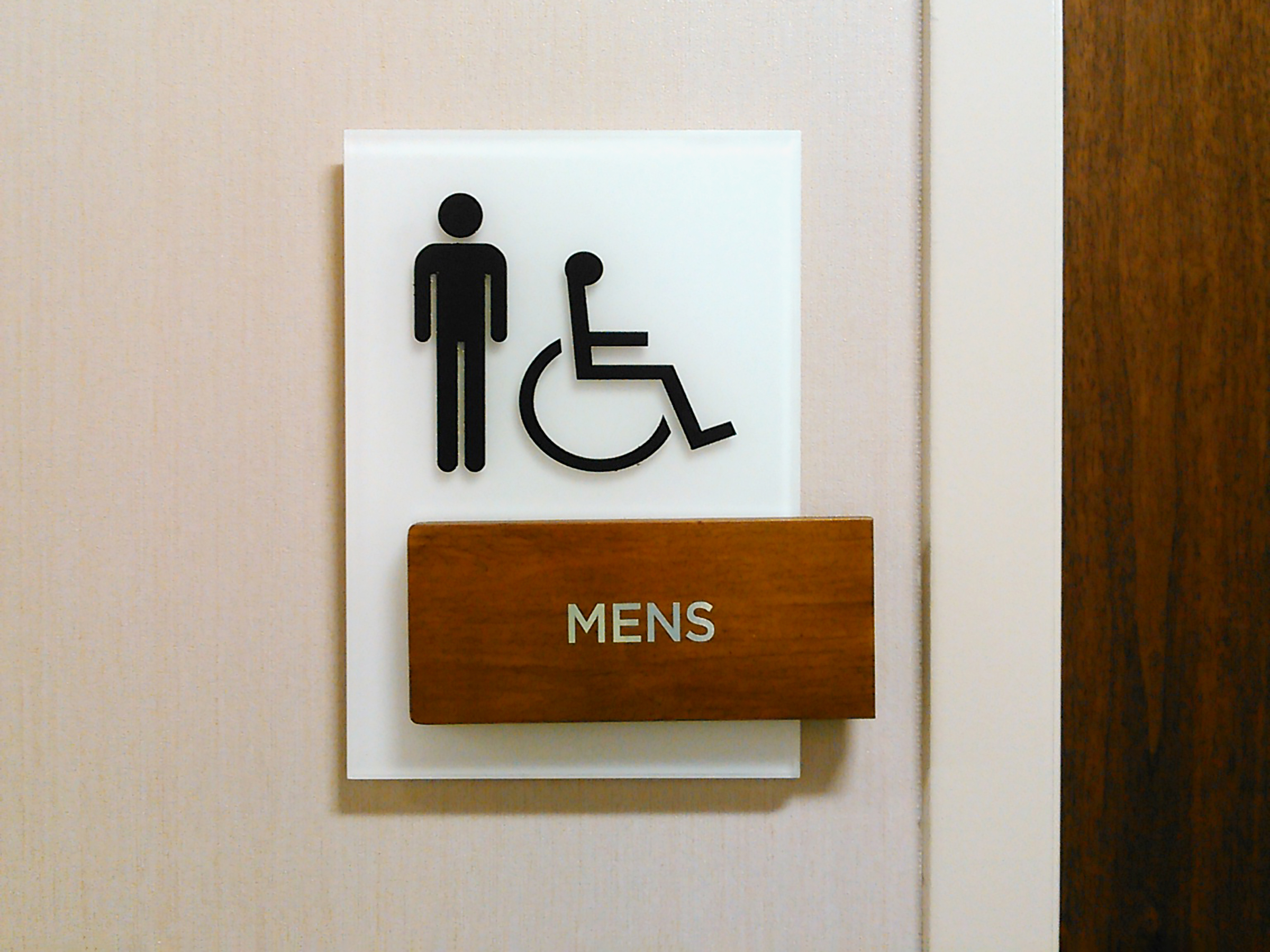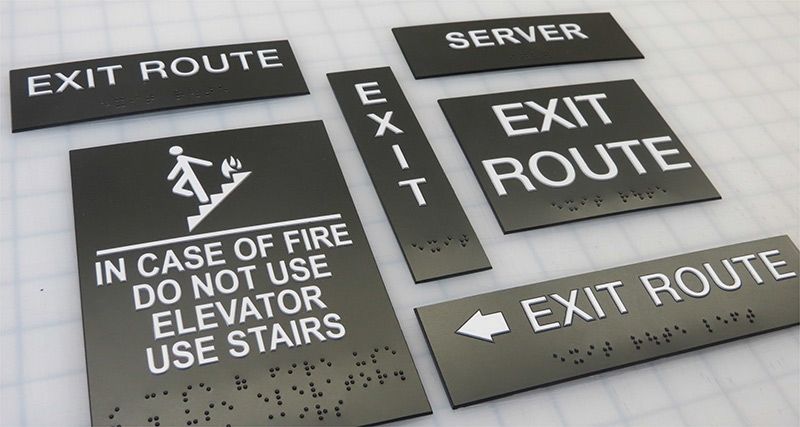Personalizing ADA Signs to Satisfy Your Particular Needs
Personalizing ADA Signs to Satisfy Your Particular Needs
Blog Article
ADA Signs: Ensuring Access and Compliance in Public Spaces
ADA signs plays an important duty in assuring ease of access and compliance within public spaces, substantially contributing to an inclusive atmosphere for people with specials needs. As we discover the subtleties of ADA signs, from responsive attributes to make intricacies, it's essential to think about how these components integrate to promote the civil liberties of all customers.
Importance of ADA Signs
In modern-day culture, the relevance of ADA signs extends beyond mere compliance with legal requireds to personify a dedication to inclusivity and availability for all individuals. These signs are important in creating environments where people with handicaps can browse public areas with the same ease and freedom as those without specials needs. By supplying clear and standardized details, ADA signs guarantees that everyone can access centers, solutions, and information without obstacles.
The value of ADA signage lies in its capacity to improve the lifestyle for individuals with specials needs by advertising equal accessibility. It gets rid of the obstacles that could otherwise prevent their capability to participate totally in neighborhood life. Furthermore, these indicators serve as noticeable signs of a company's commitment to variety and equality, mirroring wider social values that promote the legal rights and self-respect of all individuals.
In addition, ADA signage plays a crucial function in public safety and security. By directing people to exits, bathrooms, and other important facilities, it guarantees that all individuals, no matter physical capability, can leave safely during emergency situations. In recap, ADA signage is not just a governing requirement however an effective tool for cultivating a equitable and comprehensive culture.
Key Aspects of Conformity

Placement is important; indications should be set up in places that are reachable and easily noticeable. Typically, signage should be mounted in between 48 and 60 inches from the ground to make certain accessibility for both standing and mobility device customers. Responsive aspects, such as Braille, are necessary for people with visual impairments, providing critical details in a non-visual layout.
High-contrast shades between the text and history are essential to improve readability for individuals with low vision. The ADA mandates details comparison ratios to ensure quality. Furthermore, personality dimension is an essential consideration, with minimal height requirements determined by the checking out distance to ensure readability from numerous angles.
Style Considerations for Accessibility
Creating available signs calls for a precise technique to ensure it satisfies the demands of all users, especially those with handicaps. The dimension of the text is similarly essential, with ADA guidelines suggesting a minimal elevation based on seeing distance to make certain legibility.
Contrasting shades in between message and history are crucial for presence, particularly for individuals with visual impairments. Additionally, responsive elements, such as Braille and raised personalities, are essential for individuals that are blind or have low vision.
Additionally, the positioning of signs plays a substantial function in accessibility. Indicators must be mounted in locations that are easily obtainable and unobstructed. Making sure that signage is placed at appropriate elevations and angles enables all customers, consisting of those using mobility devices, to engage with them successfully.
Common Blunders to Avoid

An additional common error is the wrong placement of signs. ADA guidelines define accurate elevation and place requirements to make sure that signs are reachable and conveniently visible by all people, including those utilizing wheelchairs. Disregarding these guidelines not just hinders access but additionally runs the risk of non-compliance with legal requirements.
Additionally, inadequate comparison between message and background is a constant oversight. Sufficient contrast is essential visit here for readability, particularly for people with reduced vision. Designers often choose shades that are aesthetically appealing however do not have the necessary contrast, making the message hard to discern.
Last but not least, some designers stop working to include responsive elements, such as Braille, which are essential for people that are blind. Leaving out these attributes not only results in non-compliance with ADA policies however additionally limits access for a segment of the population that depends on tactile info.
Future Trends in Signs
Innovations in technology and increasing awareness of inclusivity are shaping the future patterns in signage style. As culture ends up being a lot more mindful of varied demands, the assimilation of clever modern technologies right into signs is getting grip. Digital signs, as an example, is progressing to consist of interactive attributes and real-time updates, which can be critical in giving dynamic details in public rooms. These indicators usually include touch displays or gesture-based controls, making it possible for users to navigate material customized to their details needs.
Another arising trend is the application of increased truth (AR) to enhance customer experience. AR-enabled signs can overlay digital details onto the physical atmosphere, giving get more aesthetically impaired individuals with auditory or haptic feedback. ADA Signs. This innovation not only enhances accessibility yet also produces an engaging experience for all individuals
Sustainability is additionally a significant variable influencing signage fads. Environment-friendly products and energy-efficient lighting options are being prioritized to line up with international environmental goals. Improvements in products scientific research are leading to the development of more weather-resistant and sturdy signs.
Final Thought
ADA signs plays an essential role in guaranteeing accessibility and compliance within public areas by integrating responsive components, high-contrast shades, and strategic placement. The adherence to ADA requirements not just promotes safe navigation for individuals with impairments however likewise indicates a company's devotion to variety and inclusivity. By staying clear of usual mistakes and embracing future trends, public spaces can remain to advance these values, guaranteeing that the legal rights and self-respect of all people are valued and maintained.
ADA signs plays an essential role in guaranteeing ease of access and compliance within public spaces, significantly contributing to a comprehensive environment for individuals with handicaps. As we discover the subtleties of ADA signs, from tactile features to design complexities, it's important to think about how these components integrate to promote the civil liberties of all users.In modern-day culture, the relevance of ADA signage extends past simple compliance with lawful requireds to embody a commitment to inclusivity and access for all people. By offering standard and clear details, ADA signs makes sure that every person can access centers, services, and info without barriers.
ADA signage plays an important role in ensuring availability and compliance within public spaces by incorporating responsive components, high-contrast shades, and critical positioning. (ADA Signs)
Report this page